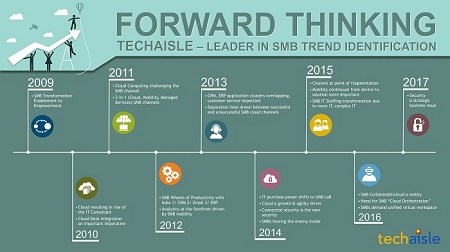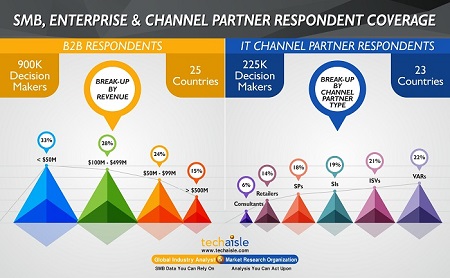Candid conversation with Dell Cloud-Client Computing chief strategist
Jeff McNaught, Executive Director & Chief Strategy Officer, Dell Cloud Client-Computing and co-inventor of Wyse thin client had a candid conversation with Techaisle on his new product initiatives, focus on security, building solutions for small and medium businesses and renewed attention to channel partners. Jeff is deeply involved in software solutions which includes partner software - Citrix, Microsoft and VMware and is responsible for the cloud-client business which includes devices that Dell build’s exclusively for Citrix or VMware as well as new products and software security offerings. One of his major new initiatives includes simplifying and securing virtual workspaces better than anyone else.
Dell VDI converging on security, cost, complexity and channels
Based on extensive primary research with SMBs and the channel partners, Techaisle forecasts the US SMB VDI market to be US$13 billion in 2020 as VDI penetration increases to 34 percent from the current 26 percent and an increase in number of seats from users who have already deployed VDI. Most of the midmarket firms that have invested in VDI are still experimenting with the technology, and most small businesses are still several years away from even this level of preliminary adoption.
The allure of VDI is clear – but the technology itself and the path to realizing its benefits is still mysterious to many small and midmarket businesses. Techaisle research shows that there is a need for VDI vendors to embark on a messaging exercise that includes - real-world examples of successful deployment of VDI, ease of VDI implementation with the least pain for SMBs & simplification of understanding VDI technology by removing fear and complexity.
Over the last two years Dell has been trying to build a momentum to remove the mystery and reduce deployment complexity. Along the way it has had more successes than missteps and it seems that Dell has reached a stage where it reasonably understands the needs of the end-customers and how to work with channel partners to win business and deploy solutions. Dell has architected multiple VDI solution delivery models for SMBs of all sizes and levels of technology adoption.


















